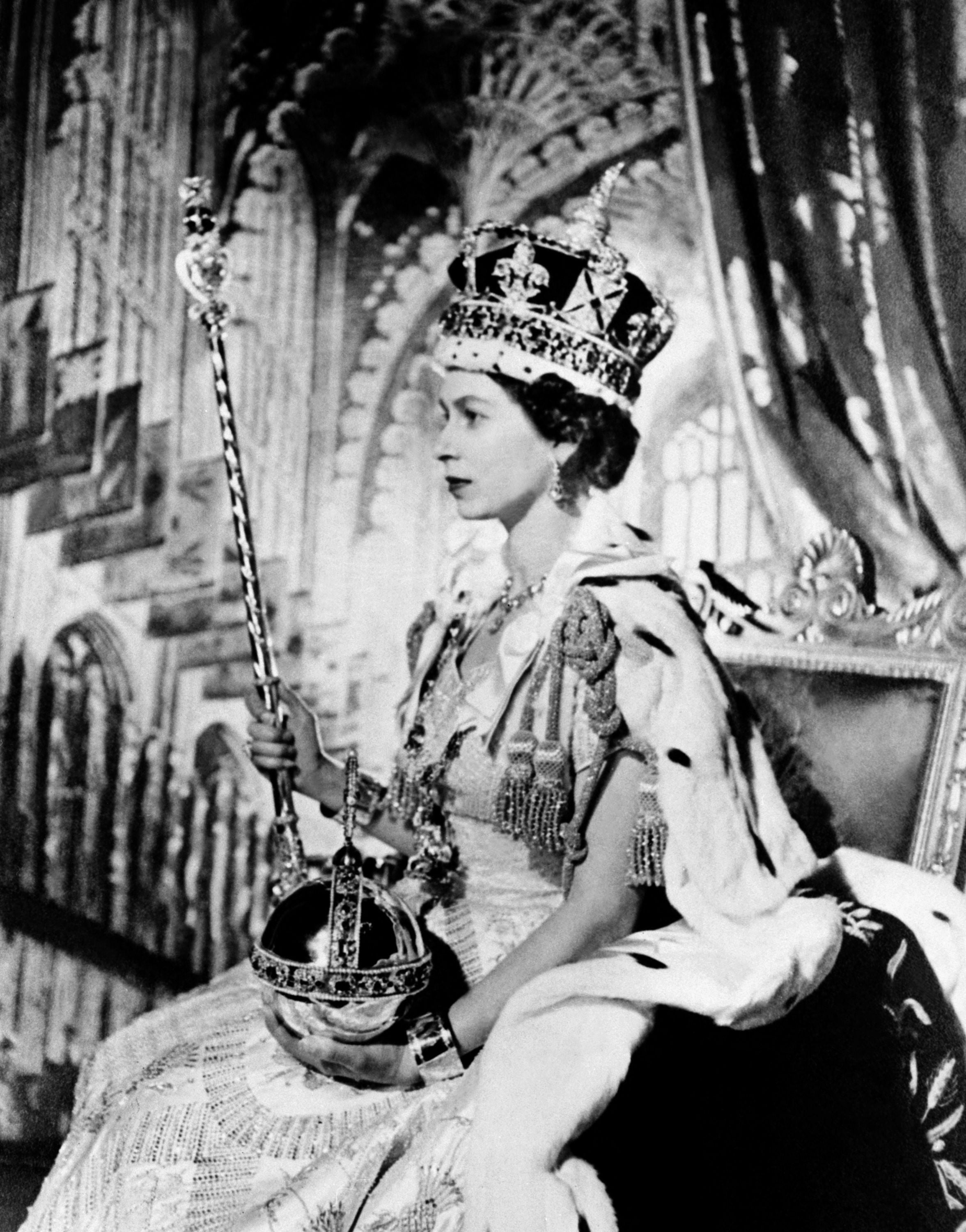Kohinoor: Why crown jewel is trending in India after Queen Elizabeth II’s death
Kohinoor diamond is entangled in dispute of ownership with claims from India and Pakistan
The Kohinoor, one of the world’s largest and most controversial diamonds set in the crown of the Queen Mother, will now be passed on to Camilla, the Queen Consort to King Charles III.
Within hours of Buckingham Palace’s announcement of the death of Queen Elizabeth II on 8 September, tens of thousands of tweets about the crown jewels had the term “Kohinoor” trending in India.
Many of the tweets, including in dozens of responses to prime minister Narendra Modi’s tribute to the late Queen, called upon Britain to return the Kohinoor diamond to its country of origin.
Kohinoor, also spelt as Koh-i-Noor, is a 105-carat gemstone which means “mountain of light” in Persian.
The diamond is set in the platinum crown which was made for the wife of King George VI, Queen Elizabeth the Queen Mother, in the 1930s. It was placed on the Queen Mother’s coffin during her 2002 funeral and has since sat on public display in the Tower of London.
The diamond has been at the centre of political and legal controversy in India amid disputes over its ownership, with claims made from not just India but Pakistan as well.
It remains a point of contention in relations between India and the UK as some Indians believe the diamond, found in India in the 14th century, was “stolen” during the colonial regime.
The diamond in fact passed through the hands of many rulers, including the Rajputs, Mughal princes, Iranian warriors, Afghan rulers and Punjabi Maharajas before it ended up in the British crown jewels.
A socio-cultural organisation in India’s eastern state of Odisha last week sought the intervention of president Droupadi Murmu to bring the diamond back, claiming it belonged to the Hindu God Jagannath.

“The Kohinoor diamond belongs to Sri Jagannath Bhagban. It is now with the Queen of England. Kindly request our prime minister to take steps to bring it to India. As Maharaja Ranjit Singh donated it to God Jagannath in his will,” Shree Jagannath Sena convener Priya Darsan Pattnaik said in the memorandum.
It is believed that the Kohinoor was unearthed from the Golconda mines in southern India’s present-day Andhra Pradesh state during the Kaaktiya Dynasty before it was handed to the British monarchy in 1849.
The diamond, which was once placed on Mughal king Shah Jahan's throne in the 17th century, was taken away from India following the invasions of Iranian ruler Nadir Shah. The Kohinoor also made its way to Afghan invader Ahmad Shah Durrani.
In the 19th century, the stone was acquired by Maharaja Ranjit Singh, the founder of the Sikh empire with Lahore as his capital. His son Duleep Singh surrendered the diamond after the Second Anglo-Sikh War of 1849, when the kingdom of Punjab was annexed by the East India Company.
It became part of the crown jewels of Queen Victoria along with hundreds of other gemstones that are said to have incalculable cultural, historical, and symbolic value and remain part of the royal collection.
According to the royal website, the crown jewels are “ceremonial treasures which have been acquired by English kings and queens, mostly since 1660”.
The crown, which also features a purple velvet cap and ermine trim, was made in 1937 for Queen Elizabeth, consort of King George VI, to be worn on her husband’s coronation on 12 May 1937.
It is laden with 2,800 diamonds set into its platinum frame. The band comprises alternating clusters of diamonds forming crosses and rectangles, bordered by single rows of brilliant-cut diamonds.
Some believe in folklore that the Kohinoor carries a curse as a result of its 750-year bloodstained history of murder, megalomania and treachery.
And last week many on social media in India called upon the royal family to take the moment of the end of the second Elizabethan era to return the jewel.
“Journey of Kohinoor: From India to England. It should come back to its origin, the least UK can do towards the centuries of exploitation, opression, racism, slavery inflicted on people of the Indian subcontinent,” Twitter user Anushree said.
“Queen Elizabeth has died today... Can we get our #Kohinoor Diamond back, which was stolen by Britisher from #India. They created wealth on others death, famine, torchers & looting,” Vivek Singh, another user said.
In 2016, the diamond was at the centre of a court battle after an NGO filed a petition asking the court to direct the Indian government to bring back the diamond.
At that time the solicitor-general, representing India’s government, said the diamond was a “gift” to the East India Company by the former rulers of Punjab in 1849 and it was “neither stolen nor forcibly taken”.
However, the government took a U-turn later and the Indian ministry of culture “reiterated its resolve to make all possible efforts to bring back the Kohinoor Diamond in an amicable manner”.
The Queen’s state funeral was held from 11am on Monday, with King Charles leading the procession from Westminster Hall to Westminster Abbey, and then out to Windsor Castle, where Elizabeth II will be laid to rest alongside her late husband the Duke of Edinburgh.
Join our commenting forum
Join thought-provoking conversations, follow other Independent readers and see their replies
Comments

Bookmark popover
Removed from bookmarks